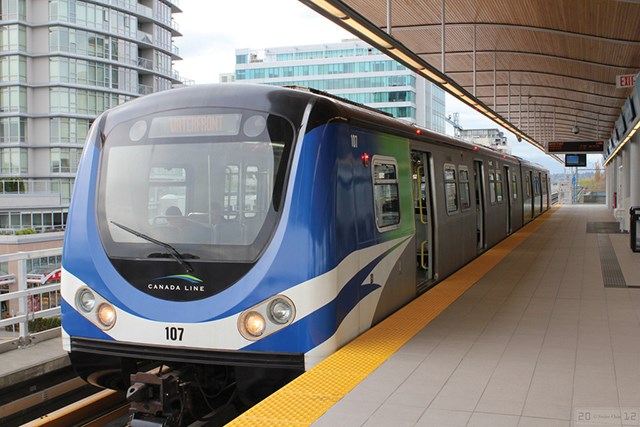Improvements to the Canada Line, more frequent bus service and a B-Line bus from Brighouse Station to Burnaby’s Metrotown are the likely major windfalls for Richmond residents in a potential 10-year, $7.5 billion regional transportation plan drawn up by Metro Vancouver mayors.
But whether these projects go ahead remains up in the air as the Mayor’s Council and the Ministry of Transportation and Infrastructure continue their game of ping-pong on how to secure funding.
And for Richmond, moving forward, the biggest concern will be how the region disperses mobility (road) pricing — an apparent increasingly popular idea — in an equitable fashion.
As it stands the mayor’s plan would call for close to $4 billion in government funding from all levels of government with most of the rest being made up for through new regional fees (approved by a future referendum) and increased ridership revenue.
Last Friday the council wrote to Minister of Transportation and Infrastructure Todd Stone to express frustration over Stone’s apparent stonewalling of the initial plan, tabled in mid-June.
The council’s letter noted: “the Province is abrogating its regional responsibility by not taking a more active and supportive role in its implementation of transit and transportation. …It would appear that the Province has set a standard that is virtually impossible to meet.”
Furthermore the mayors do not believe a referendum on finding new sources of funding — such as the existing carbon tax, tolls, mobility pricing, vehicle levies — is “sound policy.”
Stone has gone on record stating reallocating the existing carbon tax to Translink, the regional transportation authority, is not an option.
In a letter posted online on June 24, Stone also suggested asking the federal government for $1.5 billion may not be a salient option. He suggested increasing property taxes and noted he agreed with the mayors that mobility pricing is a likely scenario in the future.
So what does this all mean for Richmond if indeed the plan (or a version of it) does go ahead?
Brodie said, aside from the new B-Line, the city could also benefit from increased bus service (at least every 15 minutes on major roads) and money for cycling and pedestrian infrastructure.
The plan also calls for Canada Line upgrades, such as more trains and expanded station platforms, but when asked about the single track to Brighouse Station, Brodie noted it is an impediment to better service.
“I've always been concerned it could be a limiting factor,” said Brodie.
Although most of the proposed, major capital projects rest in Surrey and Vancouver Mayor Malcolm Brodie said residents should expect to contribute just as much as anyone else living in the region.
However, Brodie, a proponent of road pricing, said his biggest concern for the city is making sure bridge tolls aren’t the only method of charging drivers for extensively utilizing their car.
"I don't want bridge tolls alone. Living on an island we have five (crossings). It does not seem right no matter where we go outside of the city that we have to pay a toll. It doesn't seem like a fair deal," said Brodie.
If road pricing is implemented in some fashion the plan could take up to eight years and it would call for a six cent per litre reduction in the gas tax.
Last week, while the mayors and the province went back and forth with one another Brodie and fellow city councillors (Coun. Harold Steves objecting) were also busy endorsing a preliminary set of objectives for the new bridge planned at the George Massey Tunnel.
Among the city’s objectives put forth to Stone’s ministry is to ensure mobility pricing is distance based. The city is taking the stance that tolling only some bridges creates an unbalanced traffic demand across the region.
The city also wants to see the bridge have space for HOV lanes and bike paths as well as room for rapid transit. Also, the city has asked for the bridge to have an “iconic” design.
Green party member and local environmentalist and activist Michael Wolfe said moving forward with such objectives is tantamount to accepting the jet fuel facility on the Fraser River, something the city has stated it is opposed to.
Brodie noted the city’s hands remain relatively handcuffed by not only the province’s decisions but also a limited amount of information being put forth by the Ministry.
“One of the main problems with assessing the whole project is we have very little information on it. The government has been very definitive in saying that's what it will be, a bridge. So for me, step one is to look at your objectives if there's going to be bridge,” he said.
@WestcoastWood



